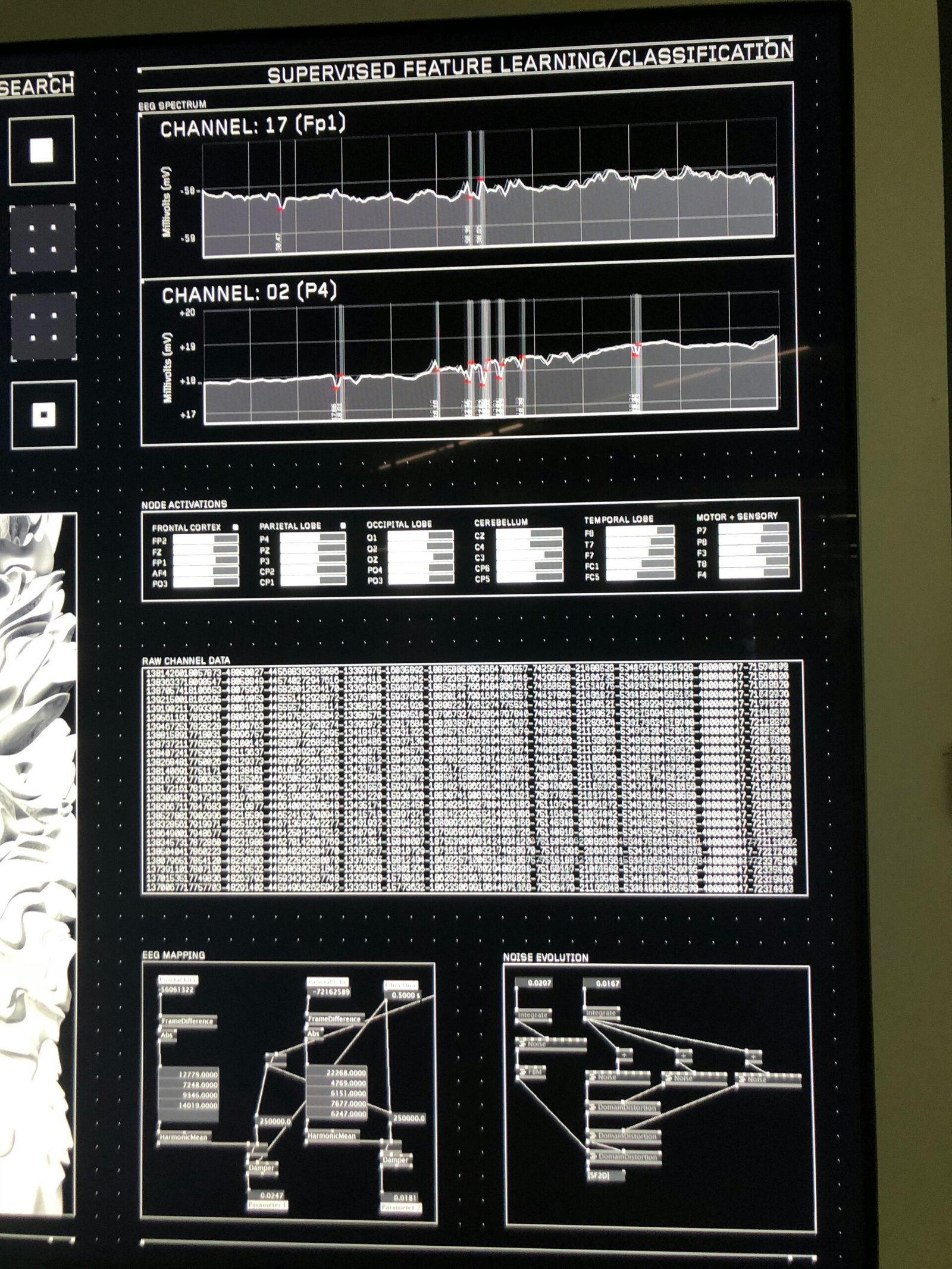What is an Industrial Display?
Introduction to Industrial Displays
Industrial displays are specialized digital screens engineered for use in demanding industrial environments. These displays serve the purpose of presenting vital data, controls, and interfaces that help in the smooth operation of industrial processes. Unlike regular consumer displays, which are designed for standard office or home environments, industrial displays are built to withstand extreme conditions such as high temperatures, humidity, dust, and mechanical shocks.
Primarily, industrial displays are employed in settings like manufacturing plants, warehouses, transportation hubs, and other industrial sites where robust performance is crucial. These devices often find applications in monitoring and control systems, human-machine interfaces (HMIs), and industrial automation setups, providing operators and technicians with real-time feedback and control capabilities.
The key distinctions between industrial and consumer displays lie in their durability and performance. Industrial displays are constructed with rugged materials and protective enclosures, often featuring ingress protection (IP) ratings to ensure they remain functional in harsh environmental conditions. Additionally, they are designed with higher brightness levels and advanced anti-glare technologies to ensure readability under varied lighting conditions, which is a critical requirement in many industrial settings.
Functionally, industrial displays offer numerous advanced features vital for industrial operations. These may include enhanced connectivity options, such as Ethernet, RS232, and USB ports, and compatibility with various industrial protocols. Furthermore, they are designed for long-term reliability, with many models offering extended lifespans and support for continuous operation—capabilities that far exceed those of standard consumer-grade displays. The combination of these unique attributes positions industrial displays as a pivotal component in modern industrial systems, facilitating efficient and reliable operational workflows.
Types of Industrial Displays
In the rapidly evolving technological landscape, industrial displays serve as critical components across numerous sectors. The various types of industrial displays available in the market today cater to many applications, each offering unique features. The most commonly utilized types include LCD, LED, OLED, and touchscreen displays, each with its distinctive advantages and suitable usage scenarios.
LCD (Liquid Crystal Display): LCDs are prevalent in industrial settings due to their affordability, energy efficiency, and long lifespan. They are typically used in control panels, medical devices, and production monitoring systems. LCD displays offer high-resolution images and are especially effective in environments where stable and continuous display output is required.
LED (Light Emitting Diode): LED displays boast superior brightness and contrast levels, making them ideal for outdoor and heavy industrial environments. Characterized by their robustness and ability to perform under extreme temperatures, LED displays are frequently implemented in digital signage, transportation systems, and large-scale industrial automation systems.
OLED (Organic Light Emitting Diode):OLED displays are known for their exceptional color representation and flexibility. Unlike LCDs and LEDs, OLEDs do not require backlighting, enabling thinner and lighter displays. These properties make OLEDs suitable for advanced industrial applications like portable diagnostic tools, wearable technology, and other sophisticated control equipment where display quality and form factor are critical.
Touchscreen Displays:Touchscreen technology has revolutionized the way industrial displays interact with users. Available in various types, such as resistive and capacitive touchscreens, these displays facilitate direct and intuitive user interaction. They are commonly found in human-machine interfaces (HMIs), ATMs, kiosks, and various control systems. Their ease of use and integration with complex systems make touchscreens essential in modern industrial setups.
Each type of industrial display offers distinct features that cater to specific needs and environments. By understanding these diverse options, industry professionals can select the most efficient and effective display technology to enhance operational performance and user experience.
Key Features and Specifications
Industrial displays are designed to meet stringent requirements across various demanding environments. A standout attribute is their resolution. High-resolution displays contribute to clearer, crisper images, which are crucial in settings like manufacturing where precision is essential. Another critical feature is brightness. Industrial displays often come with elevated brightness levels to ensure readability under direct sunlight or in high ambient light conditions.
Contrast ratio is equally important. It describes the difference between the brightest whites and the darkest blacks the display can produce. A high contrast ratio enhances the visibility of content, making it easier to read vital information quickly. Touch capabilities also play a significant role. Many industrial displays offer advanced touch functionality, which boosts interactivity and operational efficiency in user interfaces.
Ruggedness sets industrial displays apart from their consumer-grade counterparts. These displays are engineered to be durable, with features like shatterproof glass and reinforced casing. This durability extends to their resistance to environmental conditions. Industrial displays are often designed to withstand dust, water, and chemical exposure, which makes them ideal for factories, warehouses, and outdoor applications.
One cannot overlook the ability to endure extreme temperatures and vibrations. Industrial displays can function in environments with temperatures ranging from well below freezing to extremely high heat. Additionally, they are built to resist vibrations and shocks, ensuring consistent performance amidst machinery operations.
Additional specifications might include wide viewing angles, anti-glare coatings, and customizable form factors to fit specific industry needs. Each of these features and specifications together define what makes an industrial display robust, reliable, and essential for challenging environments.
Applications of Industrial Displays
Industrial displays have become integral to numerous industries due to their robustness, reliability, and functionality. These specialized screens are designed to meet the demanding environments and unique needs of various sectors. Here, we highlight some of the diverse applications of industrial displays across different industries.
In the manufacturing industry, industrial displays are crucial for monitoring and controlling machinery and processes. They provide real-time data visualization on assembly lines, allowing operators to detect issues swiftly and ensure minimal downtime. For instance, an automotive manufacturing plant might use touch-screen industrial monitors to manage robotic arms and production schedules effectively.
The transportation sector also heavily relies on industrial displays for various applications. In railway systems, these screens are used in control rooms to monitor train positions, track conditions, and signal statuses. Likewise, airports utilize rugged displays at check-in counters, security checkpoints, and baggage claim areas to streamline operations and improve passenger experience.
Medical fields benefit greatly from industrial displays, particularly in operating rooms and diagnostic laboratories. Medical-grade displays offer high-resolution imaging crucial for accurate diagnoses and surgical precision. For example, hospitals commonly use these robust screens in patient monitoring systems, ensuring they can operate 24/7 without interruption.
In the military, industrial displays are employed in command and control centers, providing clear situational awareness and facilitating quick decision-making. These displays are designed to withstand harsh conditions and operate reliably under extreme temperatures and vibrations. For example, naval ships integrate industrial monitors into their navigation systems and weapons control consoles.
Retail environments use industrial displays for digital signage, enhancing the shopping experience through dynamic advertising and interactive kiosks. Retailers implement these durable screens to display promotions, provide product information, and improve customer engagement. For example, a supermarket might deploy digital signage displays throughout the store to guide shoppers and announce special offers.
Lastly, digital signage often employs industrial displays in public spaces for informational and advertising purposes. These displays are used for essential announcements, wayfinding, and promotional content in locations such as shopping malls, airports, and train stations. For example, a city’s public transport system might use these screens to update passengers on arrival times and service alterations.
“`html
Benefits of Using Industrial Displays
Industrial displays offer a range of advantages over standard consumer displays that make them indispensable in various industrial settings. One of the primary benefits is their enhanced durability. Unlike consumer-grade models, industrial displays are designed and built to withstand harsh environmental conditions. They function reliably in extremes of temperature, high humidity, and exposure to dust and chemicals, making them suitable for use in factories, warehouses, and outdoor settings.
Longevity is another significant advantage. Industrial displays are engineered with robust materials and components that prolong their operational life. Consequently, they often outlast consumer displays, leading to reduced downtime and lower overall maintenance costs. This long service life is crucial in industrial environments where continuous and stable operation is paramount.
Reliability is a keystone of industrial displays. In sectors where operations run 24/7, the ability to depend on technology is critical. Industrial displays are crafted to offer consistent performance, even in the most demanding situations. This reliability ensures that data and visuals are clearly and accurately rendered, supporting informed decision-making and operational efficiency.
Another vital feature is their capacity to operate in harsh environments. Whether exposed to vibration, moisture, or contaminants, industrial displays maintain their functionality. These displays are often equipped with specialized protective coatings or enclosures that shield them from potentially damaging elements, ensuring they remain operational and accurate.
The use of industrial displays translates to increased efficiency and productivity within industrial environments. Reliable and durable displays mean less frequent replacements and repairs, allowing work processes to proceed unimpeded. Efficient displays also enhance the ease of monitoring and controlling industrial processes, directly contributing to smoother operations and better output.
Overall, the adoption of industrial displays brings about significant improvements in operational sustainability and performance, making them an essential component of modern industrial systems.
“`
Considerations for Choosing an Industrial Display
Choosing an industrial display is a critical task that involves analyzing several key factors to ensure optimal performance and longevity. The environment in which the display will be used is paramount. Industrial settings often expose equipment to harsh conditions such as dust, moisture, extreme temperatures, and vibrations. Therefore, robust durability is essential. Look for displays rated for protection standards like IP65 or higher, ensuring they can withstand these environmental challenges.
Compatibility with existing systems is another crucial consideration. The display should seamlessly integrate with your current hardware and software, avoiding potential technical issues that might disrupt operations. It’s essential to confirm the display supports the required input and output formats and communication protocols used by your systems.
Ease of integration is also significant, as it can save both time and resources. Displays that offer straightforward installation processes, user-friendly interfaces, and minimalistic maintenance requirements can greatly benefit your operations. Additionally, consider customization options offered by manufacturers. Customization can range from physical aspects like size and mounting options to functional attributes such as touchscreen capabilities and specialized software features.
Cost considerations should not be overlooked. While it’s tempting to opt for the most affordable option, remember that the cheapest displays might not offer the same durability or performance, leading to higher long-term costs. Balance the initial investment with the expected lifetime and potential maintenance or replacement costs.
When evaluating different models and manufacturers, it’s valuable to consult reviews and request samples. By testing products in your specific environment, you can make an informed decision about their suitability. Reputable manufacturers generally provide better customer support and warranties, which are vital for addressing any unexpected issues that may arise.
“`html
Future Trends in Industrial Displays
The field of industrial displays is set for significant transformation as new technologies and innovations emerge. These advancements promise to enhance current applications and uncover new ways to leverage display technologies in industrial contexts. One of the most prominent trends is the integration of smart displays, which tend to incorporate advanced processing power, connectivity options, and better user interfaces.
Smart displays are rapidly becoming central to many industrial applications. Their ability to communicate with other smart devices within a network allows real-time data sharing and analysis, making it easier to monitor and control complex systems. This integration with the Internet of Things (IoT) facilitates predictive maintenance, reduces downtime, and can significantly enhance operational efficiency.
Another crucial development is the continuous improvement of display resolutions. With increasingly demanding industrial environments, the need for clarity and precision in visual data representation cannot be overstated. Higher resolution displays, including 4K and beyond, provide sharper and more detailed images, which are particularly beneficial in fields requiring exacting precision, such as medical diagnostics and intricate manufacturing processes.
Moreover, energy efficiency remains a pivotal focus in the advancement of industrial displays. Innovations in display technology are geared towards reducing power consumption without compromising on performance. Advances in OLED and microLED technologies, for instance, offer brighter displays with lower energy requirements. This positions industrial displays as sustainable solutions in industries aiming to reduce their energy footprint.
Furthermore, there is a growing emphasis on the development of robust, durable displays that can withstand harsh industrial environments. Innovations in materials and protective coatings are expected to produce displays that are not only more resilient to physical impacts but also resistant to dust, moisture, and extreme temperatures.
In conclusion, the future of industrial displays is characterized by smarter, more integrated, higher resolution, and energy-efficient technologies. These advancements will not only enhance existing applications but also pave the way for new possibilities in the industrial sector.
“`
Conclusion
In this exploration of industrial displays, we have delved into their significance and versatile applications across numerous sectors. From manufacturing floors to transportation hubs, these robust and high-performing display systems play an indispensable role in ensuring operational efficiency, safety, and real-time monitoring. Their capacity to withstand harsh environmental conditions and provide clear, reliable visual data makes them integral to modern industrial setups.
The evolution of industrial displays has also highlighted advancements in technology that are shaping the future of industrial operations. With enhancements like touch-screen interfaces, high-definition imaging, and IoT compatibility, these displays are not only becoming more user-friendly but also more intelligent. They are critical in driving smart factory initiatives, promoting connectivity, and enabling predictive maintenance through advanced diagnostics.
Industrial displays thus represent a critical investment for any sector aiming to optimize its operational processes. By leveraging these displays, businesses can improve efficiency, enhance worker safety, and ensure adherence to regulatory standards. As we look forward, the trend towards more integrated, customizable, and intelligent displays promises further innovation, opening new possibilities for industrial applications.
We encourage stakeholders to evaluate their current display systems and consider upgrading to the latest industrial displays to harness their myriad benefits effectively. Staying ahead with cutting-edge display technology can provide a significant competitive advantage while fostering a proactive approach to industrial management and innovation.







